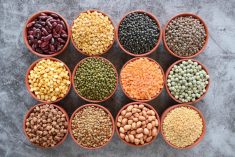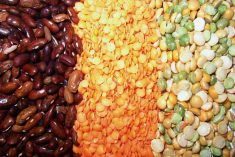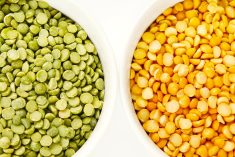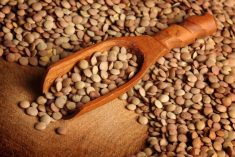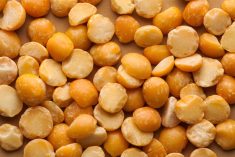Saskatchewan’s chickpea crop hasn’t been exempt from this season’s challenging harvest conditions. As of Oct. 21, 20 per cent of the province’s chickpea crop was unharvested. What still remains on the field will likely be feed quality at this point.
Colin Young of Midwest Grain Ltd. in Moose Jaw, Sask. explained that some chickpea fields have weathered various storms well, and have maintained quality levels fit for human consumption. However, other chickpea fields “sat through the exact same rain in the exact same region” and significantly suffered quality-wise.
Read Also

U.S. grains: Soybeans rise on China demand hopes; corn and wheat rebound
Chicago Board of Trade soybean, corn and wheat futures rose on Monday on signs of progress towards the end of a record-long U.S. government shutdown, along with expectations of a revival of U.S. soybean exports to China, analysts said.
“There’s not any rhyme or reason to it,” he said.
Since a portion of the chickpea crop has downgraded in quality significantly, supply for feed-quality chickpeas has increased to the point that prices have been pushed down. Currently, feed grade chickpeas are around 10 cents per pound.
“With the huge supplies of low grade and feed grade commodities, especially pulses, those prices have been pressured down,” said Young.
However, #2 grade chickpeas have increased by about four cents, to 24 cents per pound.
Young said some producers have pulled out of their pulse crops in favour of harvesting their grain fields, due to the supply glut of feed-quality chickpeas driving down the price in comparison to other commodities.
“With the market being low and damage having done what it did, that’s a new phenomenon for this year,” he said.
“I don’t want to say that all producers are letting their chickpeas rot in the field, but in years past [producers] have prioritized pulses.”





